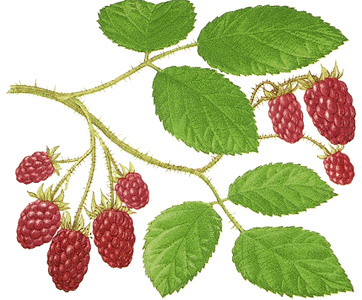Loganberry is a small, reddish-purple fruit that grows on a trailing blackberry plant. Each loganberry consists of a cluster of tiny fruits called drupelets. The loganberry is probably a natural hybrid of a red raspberry and a type of blackberry called the western dewberry. Unlike other blackberries, which grow on erect bushes, loganberries and other dewberries develop on long, willowy brambles (see Bramble ). Loganberries usually are not eaten fresh because of their extremely tart flavor. Instead, they are canned or frozen, or are made into jam, jelly, juice, or wine.

Loganberries are grown commercially in the Pacific Coast States and southwestern British Columbia. The plants grow best in fertile, well-drained, deep soil at temperatures above 14 °F (-10 °C). They need to be irrigated for their fruits and stems to develop properly.
Growers produce loganberry plants by burying parts of stems or roots in mounds of earth. As the plants grow, they are tied to stakes or wire frames. After the fruit is picked, growers remove the old stems to make room for new stems to develop. The plants produce fruit annually until they are about 12 years old.
